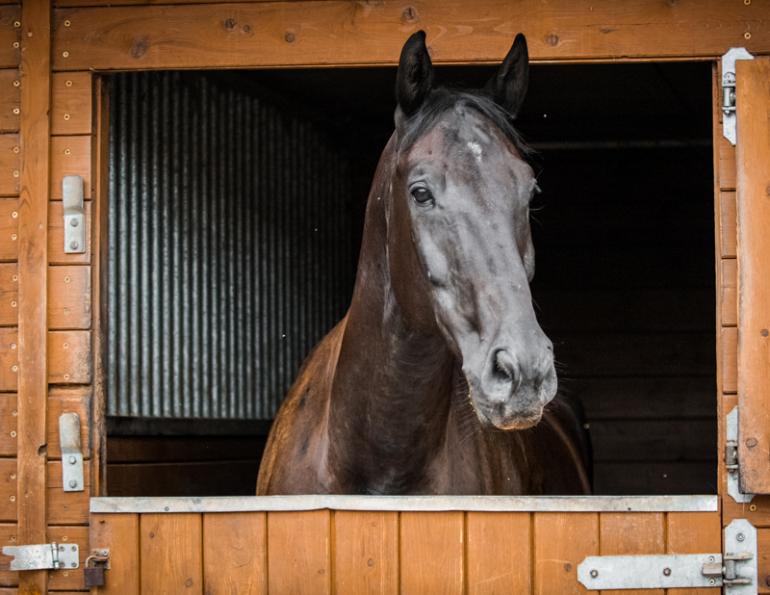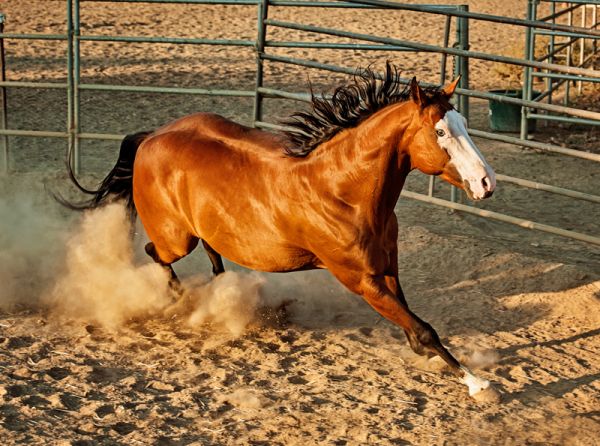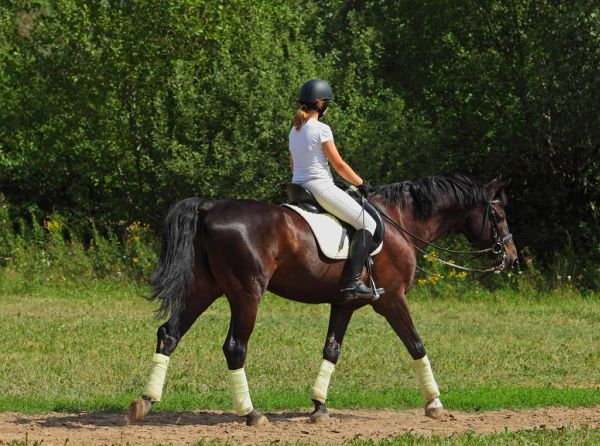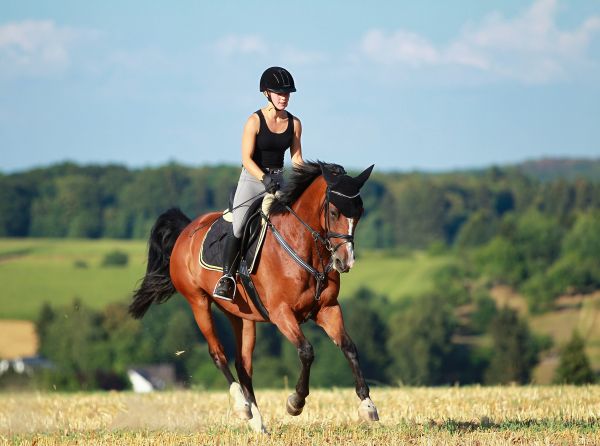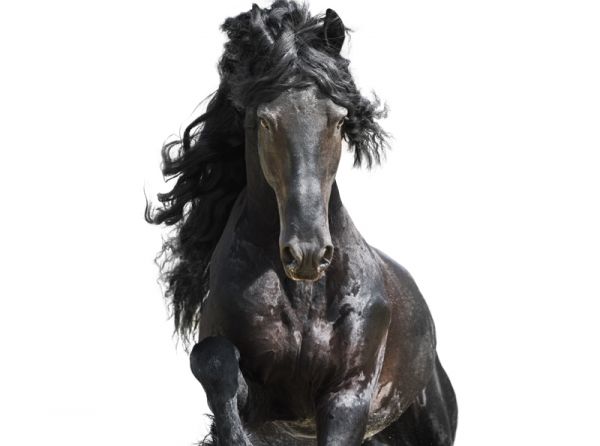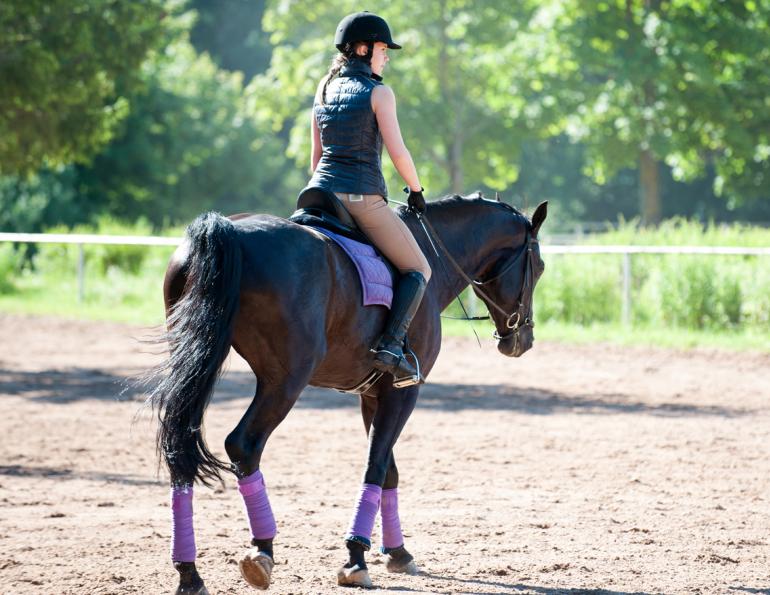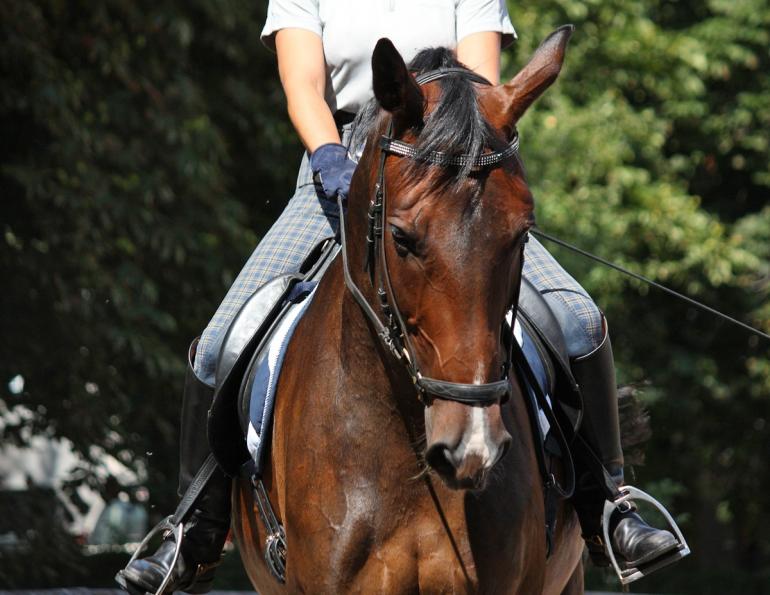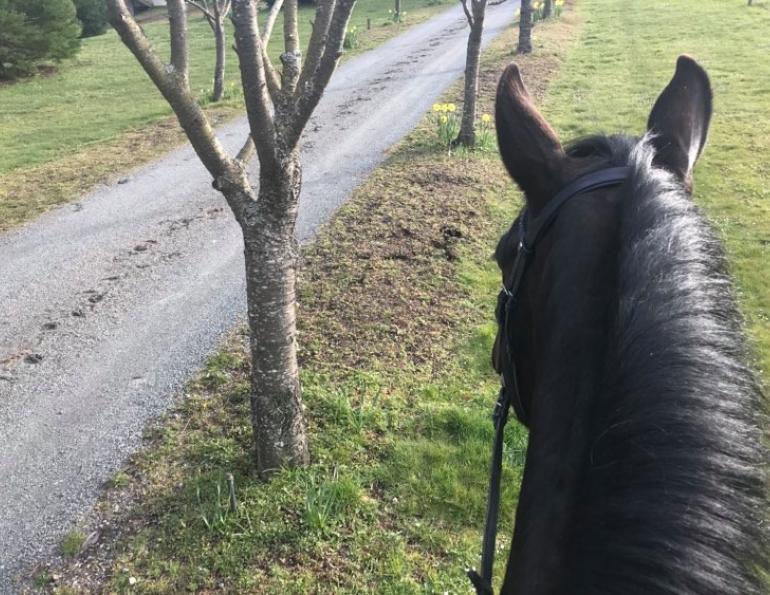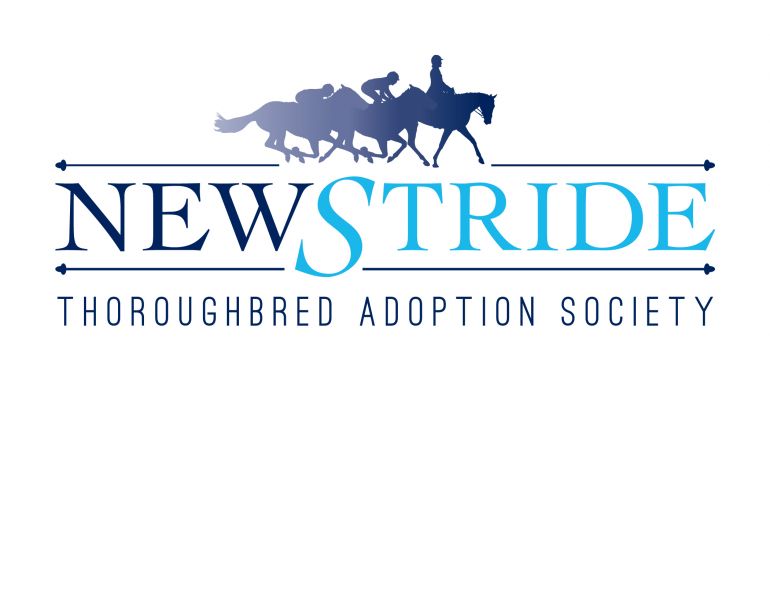By Jec A. Ballou
As an equine fitness enthusiast, I occasionally end up helping students develop rehabilitation programs for their horses after injury or prolonged layup. This is never a bright time. Faced with wasted muscles or lower legs mottled with inflammation or hooves with sections missing, owners look at their steeds warily. How will they ever perform normally again?
While optimism can be a challenge, I take every chance I can to remind students that this phase has a silver lining. By the fact that so much confinement and downtime has robbed your horse of movement and muscular tone, you now have the chance to rebuild him from scratch. This means you can entirely erase old movement patterns or unwanted habits he had prior to the layoff.
Consider Bentley, for example. Bentley is a sweet Fox Trotter that I saw monthly for clinics over the past year. Like many horses new to dressage, he was VERY one-sided. He traveled by twisting his nose to the right and carrying his ears unlevel. His bends and circles to the right were disorganized; he struggled to maintain a steady rhythm. All this asymmetry made his trot irregular and laboured. Then a few months ago, he sustained an injury to his rear fetlock and spent two months on stall rest with daily hand walks.
He has now been cleared by the vets to begin short walking sessions under saddle. He is weak, unfit, and a little stir crazy. But he is also a clean slate. He has had months without accessing his habitual movement patterns, or in his case the crookedness on his right side. So, yes, it would be lovely if he were not limited to only a minimal rehab schedule right now and his rider were able to trail ride and take him to ranch riding competitions as she wants to. But on the other hand, these next few weeks are going to make Bentley a better athlete in the long run. As he slowly rebuilds his neuromuscular system, he stands a chance to be more symmetrical than he ever has.
In his first week back under saddle, our program goes as follows: I hand walk him for 10 minutes to get joint fluids circulating and soft tissues stimulated. Then I get on and ride him in a marching walk for 20 minutes, primarily on straight lines, with 15-second bouts of trotting interspersed. Afterwards, I ice his fetlock. We do this routine twice per day.
Indeed, this much walking under saddle COULD be seen as maddening in its boredom, but I’m determined for it to be as productive as possible. First off, I ask that he stretch his neck forwards and downwards so that his top and bottom muscle chains are positively tensioned. Next, I ensure that he keeps a steady rhythm and stretches STRAIGHT in to my reins – no head tilting – which means he has to engage both hind legs equally. His old crookedness habit tries to crop up occasionally but I coax him through it quickly, and since he does not have any strength behind that pattern right now, he is plenty willing to let it go when I ask.
As Bentley slowly rebuilds over the next weeks and months, he will not just be returning to a previous level of strength. He will also be implanting new, more correct ways of using his body. Therein lies the silver lining. I implore students who find themselves in these situations to treat them as the opportunities they are. Do not just hurry to restore your horse’s performance to pre-injury status. Aim instead to use rehab to permanently fix problems that lurked before.
Main photo: Shutterstock/Aneta Jungerova



